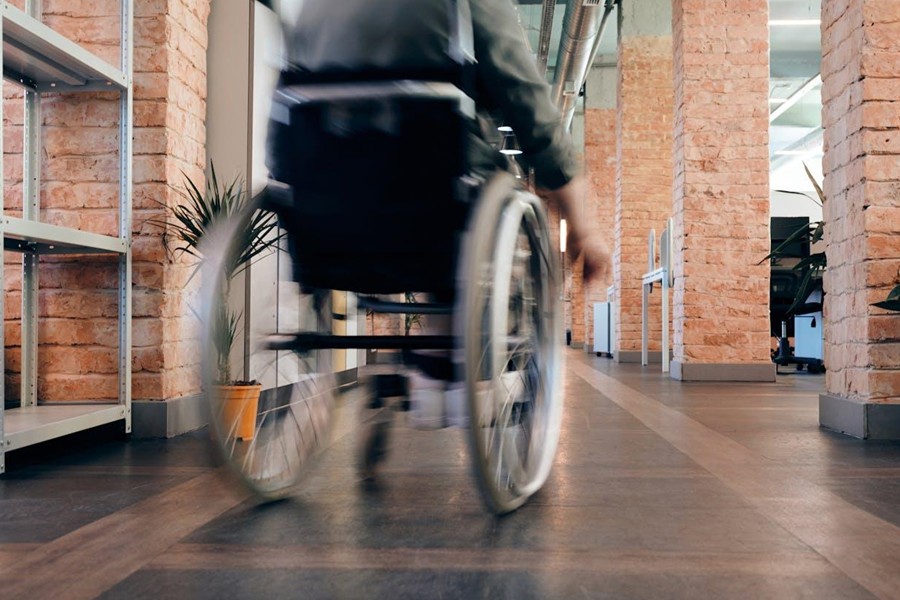 The Health Department today released an Epi Data Brief examining, for the first time, health disparities among Asian New Yorkers. Approximately 1.2 million people who identify as Asian live in New York City; the population has increased by 53 percent since 2000. Overall, Asian residents were less likely to report they were in good health – only 65 percent compared to 86 percent for White residents – yet they had a lower prevalence of binge drinking or being overweight or obese compared to other race/ethnic groups. The Epi Data Brief examines the four largest Asian heritage or ancestry groups in New York City: Chinese, South Asian, Korean and Filipino. South Asian includes respondents of Indian, Bangladeshi, Pakistani, and Nepali ancestries. Due to the relatively small number of some Asian ethnic groups, Japanese, Vietnamese, other people self-identified with Asian ancestries, and Pacific Islanders were combined into Other Asian in the brief. A closer look by ancestry found that South Asian New Yorkers are at a higher risk of hypertension, heart disease and diabetes than other Asian groups examined; Chinese men were about six times more likely to smoke than Chinese women; and Korean New Yorkers had a higher prevalence of binge drinking when compared with South Asian and Chinese New Yorkers. The data brief uses the agency’s Community Health Survey data from 2013 to 2015. The full Epi Data Brief with data tables can be found here.
The Health Department today released an Epi Data Brief examining, for the first time, health disparities among Asian New Yorkers. Approximately 1.2 million people who identify as Asian live in New York City; the population has increased by 53 percent since 2000. Overall, Asian residents were less likely to report they were in good health – only 65 percent compared to 86 percent for White residents – yet they had a lower prevalence of binge drinking or being overweight or obese compared to other race/ethnic groups. The Epi Data Brief examines the four largest Asian heritage or ancestry groups in New York City: Chinese, South Asian, Korean and Filipino. South Asian includes respondents of Indian, Bangladeshi, Pakistani, and Nepali ancestries. Due to the relatively small number of some Asian ethnic groups, Japanese, Vietnamese, other people self-identified with Asian ancestries, and Pacific Islanders were combined into Other Asian in the brief. A closer look by ancestry found that South Asian New Yorkers are at a higher risk of hypertension, heart disease and diabetes than other Asian groups examined; Chinese men were about six times more likely to smoke than Chinese women; and Korean New Yorkers had a higher prevalence of binge drinking when compared with South Asian and Chinese New Yorkers. The data brief uses the agency’s Community Health Survey data from 2013 to 2015. The full Epi Data Brief with data tables can be found here.
Last June, the Health Department partnered with the Charles B. Wang Community Health Center to raise awareness of mortality rates among Chinese New Yorkers and increased anti-smoking public messaging. A series of anti-tobacco legislative bills, signed into law last year with the goal to reduce the overall number of smokers in New York City by 160,000 by 2020, began to go into effect at the end of February. Aligned with the OneNYC plan, three years ago, the Department launched the health blueprint Take Care New York 2020 to address health inequities – including obesity, exercise and smoking – at the neighborhood level.
“At the Health Department, we strive to serve all New Yorkers, and each race/ethnic group has its own set of health outcomes and challenges,” said Health Commissioner Dr. Mary T. Bassett. “Examining the diversity of groups as ‘Asian Americans,’ which are commonly grouped together, allows the Health Department, community partners, and advocates to make more informed choices about policies and programs. These data also help us advance health equity across the city, which is at the center of all that we do.”
In 2013-2015, 65 percent of Asian New Yorkers reported that they were in good health (“excellent,” “very good,” or “good”), which was lower than White New Yorkers (86 percent), Black New Yorkers (80 percent), and Latino New Yorkers (68 percent).
Data Highlights
Overall health of Asian New Yorkers:
- In 2013-2015, 65 percent of Asian New Yorkers reported that they were in good health (“excellent,” “very good,” or “good”), which was lower than White New Yorkers (86 percent), Black New Yorkers (80 percent), and Latino New Yorkers (68 percent).
- Overall, Asian New Yorkers had the lowest prevalence of binge drinking alcohol (10 percent) compared with other racial/ethnic groups.
- Asian New Yorkers had the lowest prevalence of being overweight or obese among all racial/ethnic groups, while more than half of New York City adults were overweight or obese (36 percent versus 57 percent).
- Among Asian New Yorkers who were current smokers, men were nearly five times more likely to smoke than women (23 percent versus 4 percent).
Differences by Asian heritage:
- The prevalence of self-reported good health varied by Asian ancestry, and Chinese New Yorkers (56 percent) were least likely to report good health status among Asian groups.
- One in three (35 percent) Chinese adults did not exercise in the past 30 days compared with about one in four Korean (23 percent), South Asian (22 percent), and Filipino adults (22 percent).
- Korean adults were more likely to binge drink (22 percent) compared with South Asian (13 percent), and Chinese adults (7 percent).
- South Asian adults were more overweight or obese (51 percent) compared with Chinese (30 percent) or Other Asian adults (41 percent).
- South Asian New Yorkers were more than twice as likely as Chinese adults to have ever been told by a health care provider that they had diabetes (20 percent versus 9 percent).
- South Asian New Yorkers were also more likely than Chinese and Korean New Yorkers to have ever been diagnosed with hypertension (28 percent versus 22 percent and 16 percent).
- Chinese adults were less likely to have ever had a preventive dental cleaning compared with South Asian adults (80 percent versus 94 percent).
“The Health Department’s first-ever Epi Data Brief on the health of New York City’s rapidly increasing Asian-American population will provide invaluable data and help reduce disparate health care outcomes that negatively affect minority communities,” said Assembly Member Richard N. Gottfried of Manhattan, Chair of the Assembly Committee on Health.
“Data gives us the power to make better educated decisions, and this DOHMH report presents critical information on the state of Asian Americans’ health across our City,” said Assembly Member Yuh-Line Niou. “From heart disease, diabetes and chronic smoking, this report highlights the heath challenges that Asian American families face today. I thank DOHMH and advocates for their work on this report, and I look forward to addressing some of these health gaps in our communities with my state colleagues and through our New York State Asian Pacific American Legislative Task Force.”
“By shedding light on the health inequities that exist between Asian Americans and other groups, as well as the differences among various Asian communities, this report reinforces the urgency of creating more culturally competent resources, outreach programs and policies to ensure that all New Yorkers have the opportunity to live fuller, healthier lives,” said Council Member Margaret S. Chin. “Thank you to Commissioner Bassett, the Department of Health and all the organizations working to lay the foundation to break down the barriers that make it harder for immigrant communities to seek adequate care. I look forward to continuing the work to transform these learnings into action.”
“This demographic driven approach to health will help the City of New York to better recognize and target health disparities as they relate to ethnic and racial groups,” said Council Member Peter Koo. “In this instance, the city’s first deep dive into the health of Asian New Yorkers reveals a range of data sets that can be used to create more culturally and linguistically appropriate programs. I look forward to working with my partners in government to make sure our city is doing its best to address the range of health needs in immigrant communities.”
For more information about Take Care New York 2020, visit www.nyc.gov/tcny2020.
Become a Harlem Insider!
By submitting this form, you are consenting to receive marketing emails from: Harlem World Magazine, 2521 1/2 west 42nd street, Los Angeles, CA, 90008, https://www.harlemworldmagazine.com. You can revoke your consent to receive emails at any time by using the SafeUnsubscribe® link, found at the bottom of every email. Emails are serviced by Constant Contact








